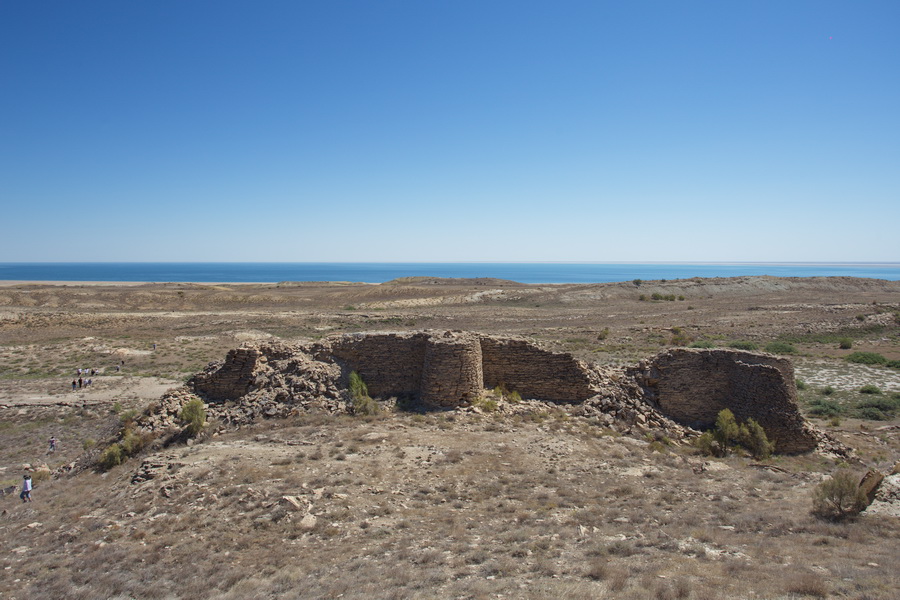Kurgancha-Kala, altopiano di Ustyurt
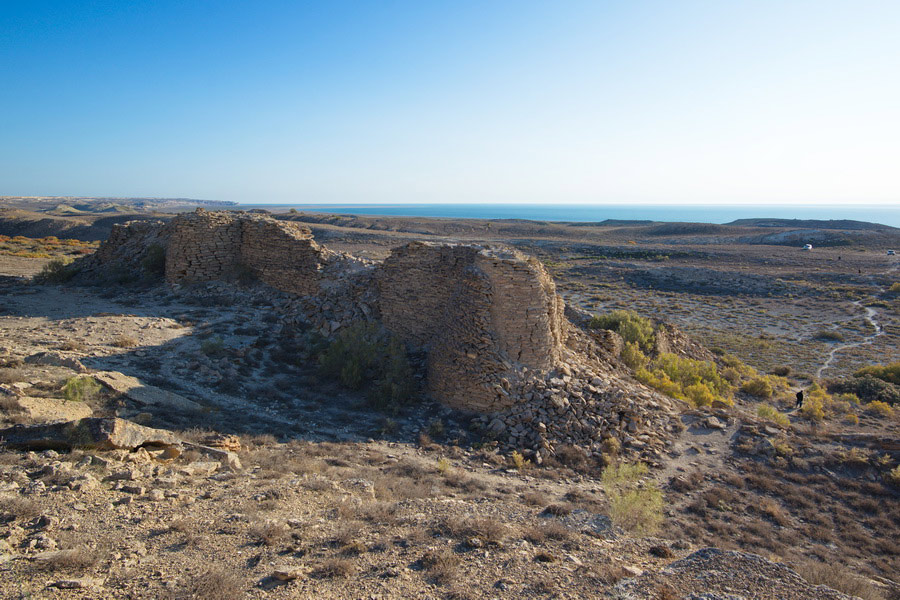
Kurgancha-Kala sull'altopiano di Ustyurt è un raro monumento storico situato nell'Ustyurt orientale, costruito nel XII-XIII secolo. Si trova a 170 km dalla città principale più vicina, Kungrad, e la distanza aumenta a 200 km su strada. Questa cittadella di pietra si trova su una delle sporgenze medie dell'altopiano di Ustyurt, che scende gradualmente verso la costa del Lago d'Aral. Un tempo serviva come avamposto di frontiera ai confini settentrionali del Khorezm e forse come ultimo caravanserraglio per i mercanti che osavano attraversare l'arido altopiano di Ustyurt. La storia esatta di Kurgancha-Kala rimane un mistero, poiché non esistono documenti storici che ne descrivano lo scopo o la storia.
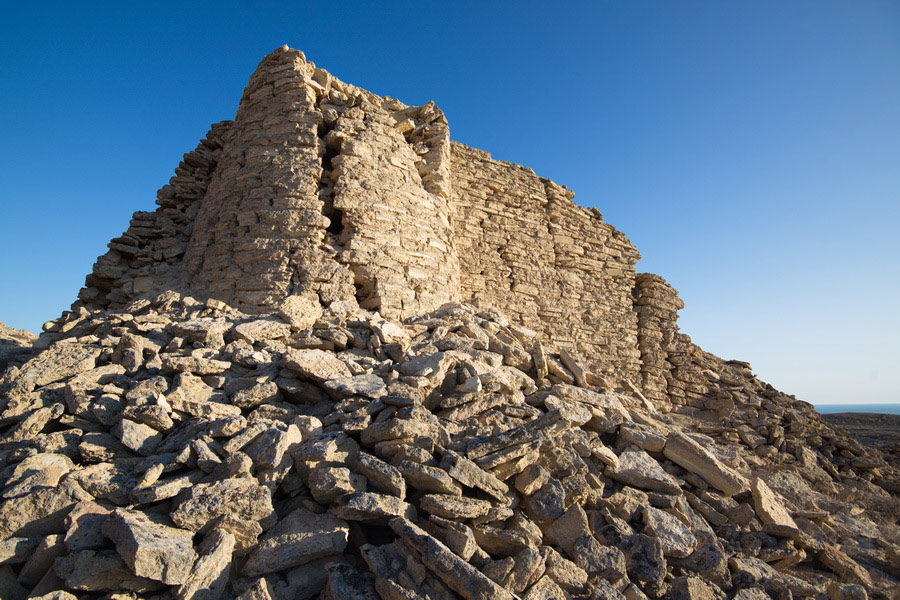
The fortress emerged during the Khorezmshahs' state period, precisely on the country's northern border. Its construction began in the 12th century and concluded in the early 13th century, right before the Mongol army led by Genghis Khan invaded the region. Although the Mongol troops never reached this fortress, it continued to function. Research indicates that Kurgancha-Kala was abandoned in the 14th century and has since gradually deteriorated.
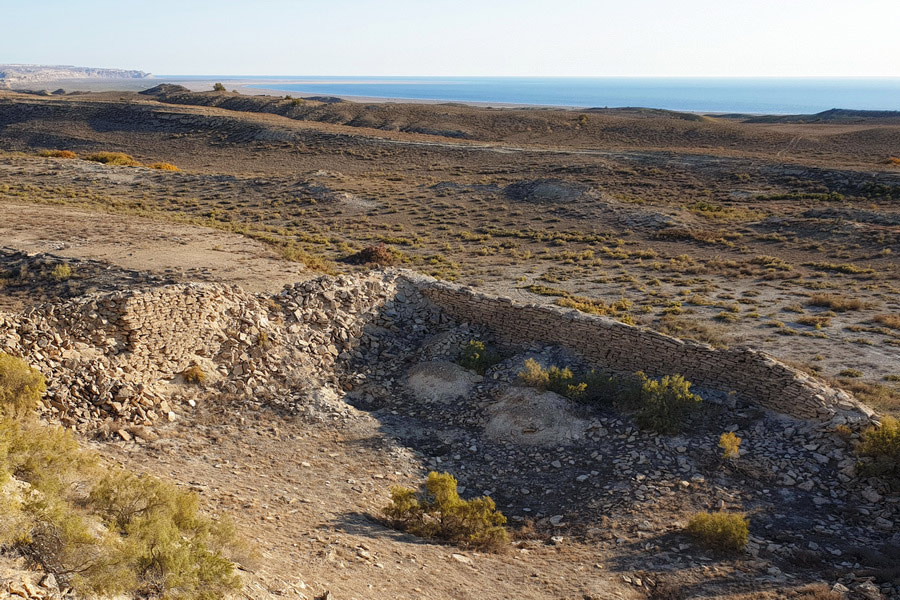
Today, the fortress is also known as Davlet-girey, a name given by local residents in the 18th-19th centuries. In 1717, the Russian army led by Prince Alexander Bekovich-Cherkassky, known as Devlet-Girey-murza before converting to Christianity, crossed the Ustyurt Plateau. Although the army passed much further south, the local Karakalpaks believed the Russians built the fortress on the plateau's ledges. Interestingly, another fortress named Kurgancha-Kala, existing in the 7th-8th centuries, is located 250 km southeast, near the settlement of Takhtakupyr, but only barely noticeable mounds remain of its walls.
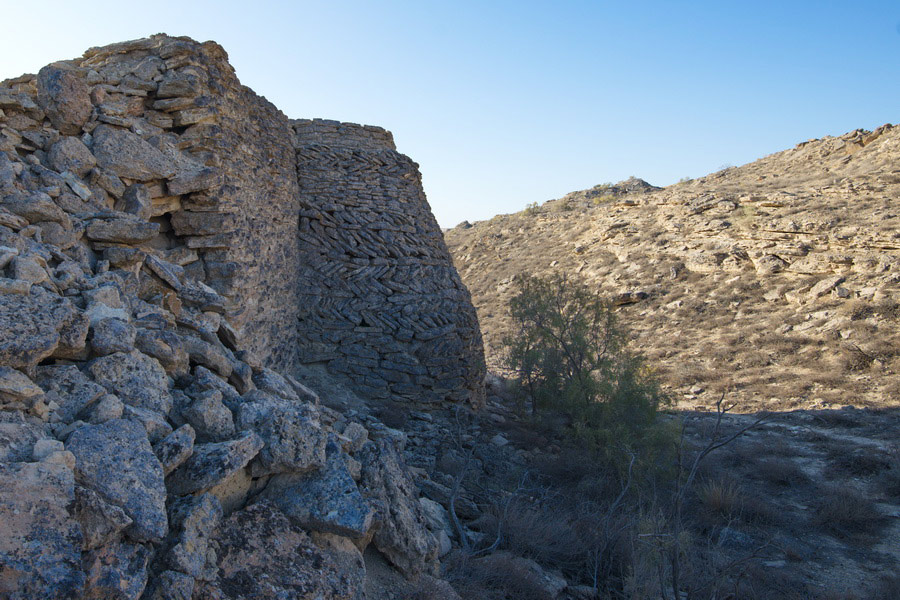
The Kurgancha-Kala on the Ustyurt Plateau measures 40x40 meters and is oriented according to the cardinal directions. The western wall is significantly higher and more fortified. Along the eastern wall were rooms, and ruins of one such room contained beads made of blue glass and shells. The fortress was constructed from cut limestone slabs taken from the upper layers of the Ustyurt Plateau. Nearby, on a higher ledge, stands a pyramid made of the same stones, serving as a watchtower or beacon.
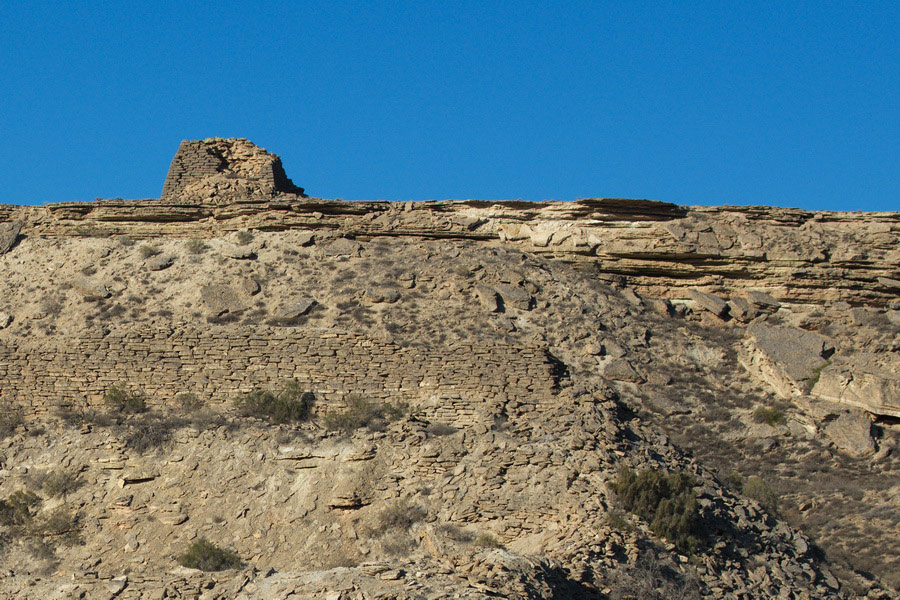
To visit Kurgancha-Kala, one must travel approximately 150 km northwest from Muynak or join a tour to the Aral Sea. A yurt camp, where tourists spend the night and from which a jeep can reach the stone walls in just 5 minutes (or a half-hour walk), is located 3 km from the fortress.
